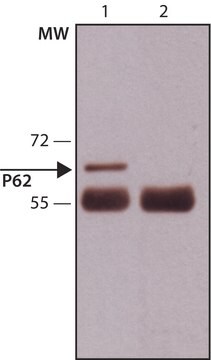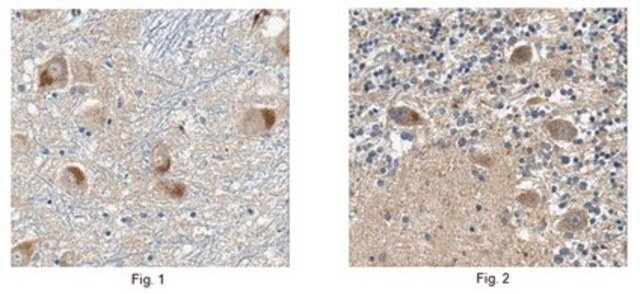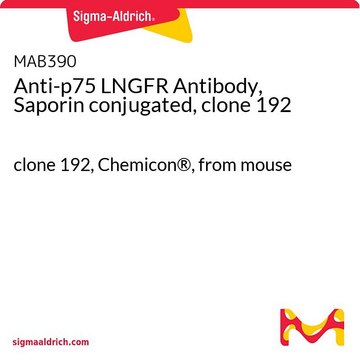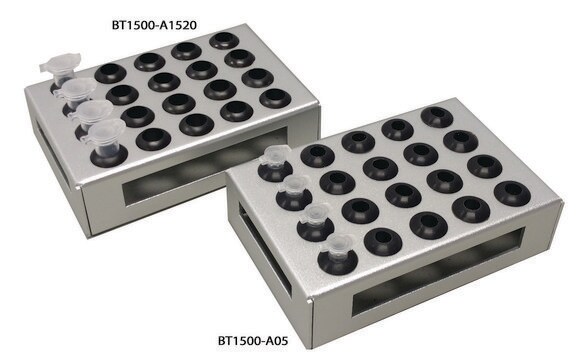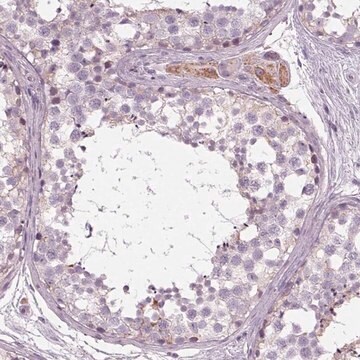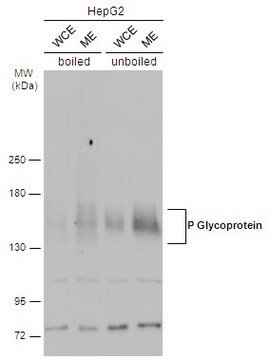MAB390-100UG
Anti-p75 LNGFR Antibody, Saporin conjugated, clone 192
clone 192, Chemicon®, from mouse
Synonym(s):
p75 Low Affinity Neurotrophin Receptor, NGFR
Sign Into View Organizational & Contract Pricing
All Photos(1)
About This Item
UNSPSC Code:
12352203
eCl@ss:
32160702
NACRES:
NA.41
Recommended Products
biological source
mouse
Quality Level
conjugate
saporin
antibody product type
primary antibodies
clone
192, monoclonal
species reactivity
rat
should not react with
mouse, human
manufacturer/tradename
Chemicon®
technique(s)
immunolesioning: suitable
isotype
IgG1
NCBI accession no.
UniProt accession no.
shipped in
dry ice
target post-translational modification
unmodified
Gene Information
human ... NGFR(4804)
Specificity
Rat NGF receptor. MAB365 is the monoclonal antibody used for MAB390-SAP
Application
Anti-p75 Low Affinity Nerve Growth Factor Receptor Antibody, Saporin conjugated, clone 192 is an antibody against p75 Low Affinity Nerve Growth Factor Receptor for use in 0.
Immunotoxin (see "Protocols" for Technical Notes)
Research Category
Neuroscience
Neuroscience
Research Sub Category
Neurodegenerative Diseases
Neurochemistry & Neurotrophins
Neurodegenerative Diseases
Neurochemistry & Neurotrophins
Physical form
Saporin Conjugated. 192-IgG-SAP is sterile filtered and presented in Dulbecco′s PBS with no preservative.
Storage and Stability
Centrifuge material at low speed in microfuge to ensure all of the solution is at the bottom of the tube. Vortex gently. Long term storage at -70ºC or below. Short term storage at -20ºC or 2-8ºC with appropriate antibacterial agent if compatible with the intended application. The sterile conjugate is stable at 2-8ºC for several months. Avoid repeated freezing and thawing. Glycerol (1:1) can be added for additional stability if compatible with the intended application. This immunotoxin may be handled safely using standard laboratory procedures as the cross-species reactivity between these anti-rat p75 antibodies and the human form of p75 is negligible.
Other Notes
Concentration: Please refer to the Certificate of Analysis for the lot-specific concentration.
Legal Information
CHEMICON is a registered trademark of Merck KGaA, Darmstadt, Germany
Disclaimer
Unless otherwise stated in our catalog or other company documentation accompanying the product(s), our products are intended for research use only and are not to be used for any other purpose, which includes but is not limited to, unauthorized commercial uses, in vitro diagnostic uses, ex vivo or in vivo therapeutic uses or any type of consumption or application to humans or animals.
Not finding the right product?
Try our Product Selector Tool.
Certificates of Analysis (COA)
Search for Certificates of Analysis (COA) by entering the products Lot/Batch Number. Lot and Batch Numbers can be found on a product’s label following the words ‘Lot’ or ‘Batch’.
Already Own This Product?
Find documentation for the products that you have recently purchased in the Document Library.
Selective immunolesions of hippocampal cholinergic input fail to impair spatial working memory.
McMahan, R W, et al.
Hippocampus, 7, 130-136 (1997)
M M Nicolle et al.
Neuroscience, 77(3), 649-659 (1997-04-01)
Lesion models in the rat were used to examine the effects of removing innervation of the hippocampal formation on glutamate receptor binding in that system. Bilateral aspiration of the entorhinal cortex was used to remove the cortical innervation of the
Toxin-induced death of neurotrophin-sensitive neurons.
R G Wiley
Methods in molecular biology (Clifton, N.J.), 169, 217-222 (2001-01-06)
Complete and selective cholinergic denervation of rat neocortex and hippocampus but not amygdala by an immunotoxin against the p75 NGF receptor.
Heckers, S, et al.
The Journal of Neuroscience, 14, 1271-1289 (1994)
J J Waite et al.
Neuroscience, 65(2), 463-476 (1995-03-01)
Immunolesions of the cholinergic basal forebrain were produced in rats using various intraventricular doses of the immunotoxin 192 immunoglobulin G-saporin: 0.34, 1.34, 2.0, 2.7 and 4.0 micrograms/rat. A battery of behavioral tests, chosen on the basis of reported sensitivity to
Our team of scientists has experience in all areas of research including Life Science, Material Science, Chemical Synthesis, Chromatography, Analytical and many others.
Contact Technical Service